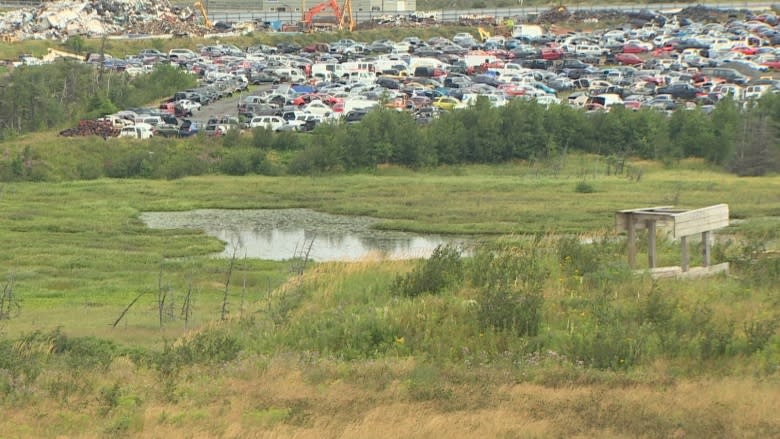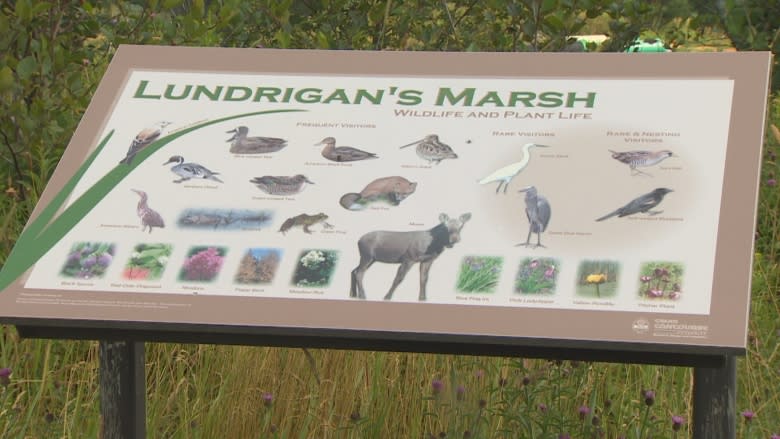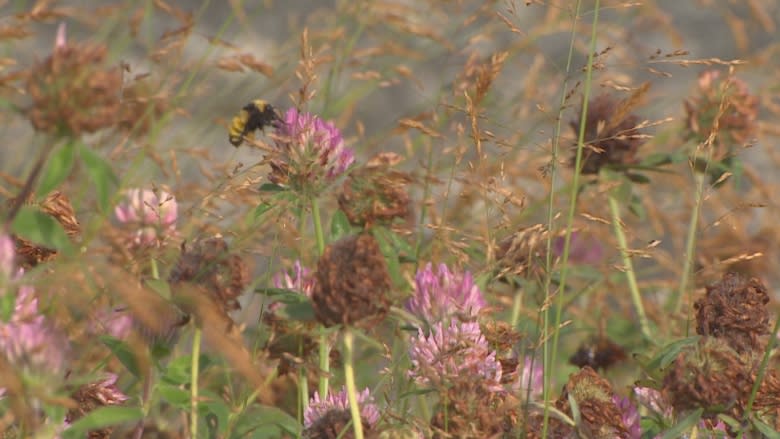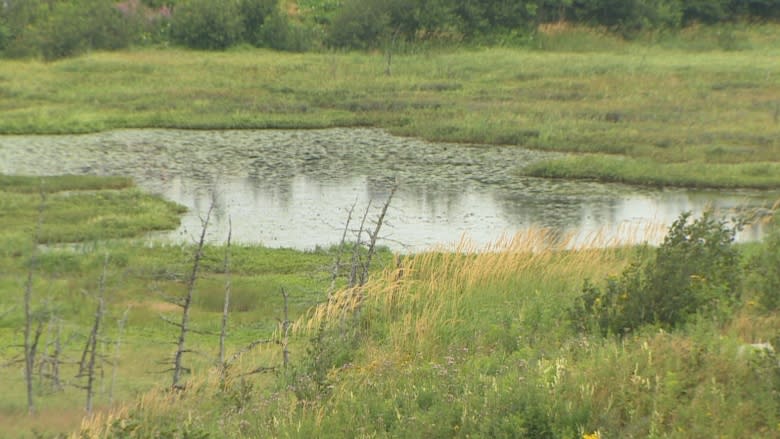How a St. John's wildlife oasis prevents flooding in the city
It's easy to miss but Lundrigan's Marsh, a large wetland surrounded by industry in the east end of St. John's, is quietly helping a wide variety of wildlife and city residents.
Bordered by Logy Bay Road and East White Hills Road, the wetland is a hidden gem tucked behind businesses, junkyards and a regional landfill.
"If you drive around the area there are some points where you can peek over the industry and look in, but it is so heavily surrounded by industry that it can be hard to get a good glimpse," says Elanor Dillabough, a green team leader with Northeast Avalon Atlantic Coastal Action Program (NAACAP).
Although it is obscured by development, the marsh covers a large area.
"It's really, really big. It's the biggest cattail marsh in eastern Newfoundland. It's more than 55 acres ( 22 hectares) in total.
In the 1990's there was a proposal to build the Trans-Canada Highway through the marsh, but that plan changed after it received vigorous opposition from local conservation groups. The City of St. John's purchased the wetland area more than a decade ago.
"So it is technically protected. However encroachment and potential problems associated with salt leachate and things washing off the roads are always going to be issues when you are surrounded by this much industry," said Dillabough.
It's possible to see everything from moose to migrating songbirds in the area and after big storms the wetland helps the city by absorbing runoff and preventing flooding.
NAACAP monitors the marsh, does work to protect it, and maintains a trail and lookout off East White Hills Road, next to PF Collins. Dillabough says simply letting people know the marsh exists is important.
"My group does a lot of water quality testing, community outreach," she said.
"But a lot of what we are doing is trying to get people aware of the marsh and talking about the marsh because the more people are aware of it and people are talking about it, the less likely it is that businesses are going to encroach on the marsh. As a community together, I think we can really make a difference protecting it just by being aware of it."
Dillabough says while other cities are investing huge sums of money to create wetlands that do what Lundrigan's Marsh does, it's important to protect what St. John's already has.
"Marshes are really important in protecting against flood risks. They act like a big sponge. So, when a big rainfall happens, it acts as a water catchment area and then release it slowly back into the city rather than all at once and reduces the risk of flooding."






